How to Prepare an Oral Presentation
Public speaking is one of people's biggest fears in the world, but delivering a great oral presentation or speech doesn't have to be terrifying. A good presentation isn't about being a naturally gifted public speaker, it is about...
Method 1 of 3:
Preparing Your Presentation
-
 Identify the core point you want to make. What is the crucial bit of information you want to get across to the audience? Think of this as the thesis or theme of your presentation. People can only process a limited amount of information in one sitting, so don't try and hit them with 10-15 different ideas and points. Instead, find one good idea and expand on it fully. The best points are unexpected, exciting, or controversial -- the sort of idea that piques people's interest and give you lots of room to elaborate, so think of a unique take on your topic.[1]
Identify the core point you want to make. What is the crucial bit of information you want to get across to the audience? Think of this as the thesis or theme of your presentation. People can only process a limited amount of information in one sitting, so don't try and hit them with 10-15 different ideas and points. Instead, find one good idea and expand on it fully. The best points are unexpected, exciting, or controversial -- the sort of idea that piques people's interest and give you lots of room to elaborate, so think of a unique take on your topic.[1]- Is your presentation trying to be persuasive? If so, ask yourself "what do I want the audience to do/believe when they leave?"
- Is your presentation informative? If so, ask yourself "what does the audience need to know when they leave?"
- Is your presentation a sales pitch or business related? Your presentation needs to make someone pull out their wallet at the end, so the product and it's uses must come first.
-
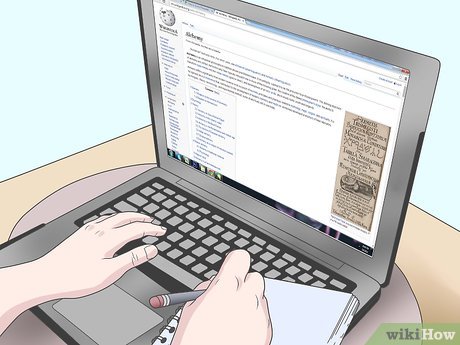 Research everything you can about your topic. In order to prepare a successful oral presentation you need to be the most knowledgeable person in the room about your topic. You can never do enough research. More likely than not you won't use all of the research you uncover in your presentation. However, the more context, facts, and figures you find the easier it will be to field questions and structure your talk.[2]
Research everything you can about your topic. In order to prepare a successful oral presentation you need to be the most knowledgeable person in the room about your topic. You can never do enough research. More likely than not you won't use all of the research you uncover in your presentation. However, the more context, facts, and figures you find the easier it will be to field questions and structure your talk.[2]- As you research, write down crucial facts or figures on note cards. As you prepare the presentation you can move them around and order them, helping you see your argument visually.[3]
- Even oral presentations about personal topics and issues can benefit from research. Find the background data for your story, pepper in a few facts about yourself or the larger issues, and ground the personal problems in issues the audience is familiar with.
-
 Use a simple, deliberate structure for your speech, repeating your key point in the beginning, middle, and end. Many speechwriters and presenters use the same structure for all of their talks. Though it is a bit cliche, it works: Tell then what you are going to tell them, tell them, and then tell them what you have told them. You want to use repetition to help your audience follow along. For example, if you are trying to convince a new mall to buy your sandwich shop:
Use a simple, deliberate structure for your speech, repeating your key point in the beginning, middle, and end. Many speechwriters and presenters use the same structure for all of their talks. Though it is a bit cliche, it works: Tell then what you are going to tell them, tell them, and then tell them what you have told them. You want to use repetition to help your audience follow along. For example, if you are trying to convince a new mall to buy your sandwich shop:- Intro: Tell Them What You're Going to Telling Them. This is where you state what problem or issue your presentation is going to address. Tell them why your shop is a good fit for the mall and keep it simple. "A sandwich shop is a perfect fit for your new mall because it is affordable, popular with shoppers, and provides incentive for people to stay in the mall during lunch instead of leaving."
- Argument: Tell Them. This is where you fill up your argument with relevant facts, figures, and details. Again, use the repeating structure to keep things simple. For the example, you could break the argument down into 3 mini-arguments: 1) The affordability of a sandwich shop. 2) The popularity of the restaurant with shoppers. 3) The benefits to the other shops in the mall. All three of these points feed to the idea that "you should buy my sandwich shop."
- Conclusion: Tell Them what You Told Them. To wrap everything up, briefly highlight the points you've made before, then finish by returning to your key point: "Thanks to extensive market research, cost analysis, and prior examples of success, it is clear that this sandwich shop is the perfect answer to the new mall's "where will people eat?" question.[4]
-
 Pepper your speech with specific facts and details to sound knowledgeable and authoritative. A great oral presentation is specific and actionable. Specific means that you back up your arguments and points with credible details and facts. If you're talking about the sandwich shop, you could point to market research about shoppers and eating habits, the projected costs/profits, etc.
Pepper your speech with specific facts and details to sound knowledgeable and authoritative. A great oral presentation is specific and actionable. Specific means that you back up your arguments and points with credible details and facts. If you're talking about the sandwich shop, you could point to market research about shoppers and eating habits, the projected costs/profits, etc. -
 Write out note cards for each major point of your presentation. On each note card, write down the idea or fact you need to deliver. The amount of information you put on the card is up to you, but you should try and keep them concise. Your note cards should not be your script or you'll spend the whole time staring at the paper and not engaging the crowd. This makes you look unprepared, and it is hard to quickly find your place again in a sea of words if you get lost.
Write out note cards for each major point of your presentation. On each note card, write down the idea or fact you need to deliver. The amount of information you put on the card is up to you, but you should try and keep them concise. Your note cards should not be your script or you'll spend the whole time staring at the paper and not engaging the crowd. This makes you look unprepared, and it is hard to quickly find your place again in a sea of words if you get lost.- Note cards should be your occasional lifeline, helping out if you get stuck. If you need them to deliver the entire presentation then you have not practiced the speech enough ahead of time.
- Presentation software, like Powerpoint or Keynote, has a note function as well. This puts up a small window on your screen with note that does not show up on the audience's screen or projector.[5]
-
 Keep visual aids simple, unobtrusive, and visual. Too many people give PowerPoint presentations a bad name. Audiences complain that they spend more time reading slides than listening to the talk, and some presenters end up just reading right off the slide. As obvious as it seems, a good visual aid needs to remain visual. Keep the words to an absolute minimum, focusing instead on letting the images complement your speech.
Keep visual aids simple, unobtrusive, and visual. Too many people give PowerPoint presentations a bad name. Audiences complain that they spend more time reading slides than listening to the talk, and some presenters end up just reading right off the slide. As obvious as it seems, a good visual aid needs to remain visual. Keep the words to an absolute minimum, focusing instead on letting the images complement your speech.- Skip the fancy transitions and effects -- they will only distract the audience.
- This is you visual aid. Use it to help guide your presentation instead of expecting it to carry the whole speech.
- When putting text on slides, stick to a maximum 6 bullets, each with no more than 6 words.[6]
-
 Find clear, authoritative phrasing, aiming to talk at a roughly high-school level. Phrasing is not what you say, but how you say it. A good oral presentation is clear and concise. It gets the points across without over-explaining, and everything leads back to your core concept or idea. Think of teaching high schoolers first-- you want to be clear, avoid wordy phrases or huge vocab, and get right to the point. There are generally two ways to practice phrasing:
Find clear, authoritative phrasing, aiming to talk at a roughly high-school level. Phrasing is not what you say, but how you say it. A good oral presentation is clear and concise. It gets the points across without over-explaining, and everything leads back to your core concept or idea. Think of teaching high schoolers first-- you want to be clear, avoid wordy phrases or huge vocab, and get right to the point. There are generally two ways to practice phrasing:- Written speeches. If you are uncomfortable improvising, you should consider writing out your speech in advance. This is best for long, complicated presentations. But writing your ideas down can be a great way to find your wording for any presentation, however long.
- Improvising off of note cards. Think of your note cards as your road map, telling you what points to hit and in what order. This allows you to improvise, feeling out the crowd a bit, without forgetting to say anything. However, you should practice 4-5 times in advance to find a couple of good phrases ahead of time.[7]
-
 Practice, practice, practice. Research and planning are only half the battle. You need to know your presentation backwards and forwards if you want to deliver a great speech. You should practice exactly how you plan to give the speech -- standing, using your visual aids, and looking up at the imagined "audience." Use these practice presentations to memorize your note cards and structure. You want the words to become second nature so that you can focus more on eye contact, inflection, and your phrasing when giving the actual presentation. [8]
Practice, practice, practice. Research and planning are only half the battle. You need to know your presentation backwards and forwards if you want to deliver a great speech. You should practice exactly how you plan to give the speech -- standing, using your visual aids, and looking up at the imagined "audience." Use these practice presentations to memorize your note cards and structure. You want the words to become second nature so that you can focus more on eye contact, inflection, and your phrasing when giving the actual presentation. [8]- Practice in front of the mirror or record yourself. Watch it back and note any areas you can improve on. You might work on removing the words "like" or "um," speaking more clearly, or slowing down on a difficult point.
- Ask a professor, friend, or family member to watch your practice presentation. When you're done, see if they have any questions or pointers. What did they think the main point was? Did they follow the argument? Where there parts where they got confused?
Method 2 of 3:
Delivering your Speech
-
 Arrive to the presentation early and test your equipment. Set up in advance as much as you can. Make sure your laptop is charged and all other equipment is working. If you are relying on IT personnel to set up, try to talk to them in advance so you know what you need to bring with you.[9]
Arrive to the presentation early and test your equipment. Set up in advance as much as you can. Make sure your laptop is charged and all other equipment is working. If you are relying on IT personnel to set up, try to talk to them in advance so you know what you need to bring with you.[9]- Have another version of your presentation saved on an external hard drive. Put it in your bag and have it with you at all times. In addition, bring a printed copy of the presentation in case the technology fails.
-
 Warm up the audience with small talk and smiles before beginning. Get your audience on your side. Ask if they can hear you, and move appropriately if not. If you have one, tell a joke or two while IT sets up the projector or while the rest of the group files in, or ask about the location, the crowd (where are they from, etc.), or their previous exposure to your topic. Just be yourself and the audience will naturally gravitate towards you, as they like the "candid" feeling before the talk begins.
Warm up the audience with small talk and smiles before beginning. Get your audience on your side. Ask if they can hear you, and move appropriately if not. If you have one, tell a joke or two while IT sets up the projector or while the rest of the group files in, or ask about the location, the crowd (where are they from, etc.), or their previous exposure to your topic. Just be yourself and the audience will naturally gravitate towards you, as they like the "candid" feeling before the talk begins.- Even if you must go directly on stage, you can still begin with 1-2 lines of introduction and a quick joke. Keep it light, then turn your attention completely to your presentation once you're ready.
- Scan your audience for a few friendly faces, usually the people who make eye-contact and seem ready for your presentation. As you talk, turn your attention towards them frequently, as they will help you stay engaged with the audience.
-
 Stand with a strong, confident posture. You should stand with both feet shoulder-length apart and firmly planted. You shouldn't hunch, and your arms should be comfortable by your side or gathered in front of you, depending on what feels comfortable and appropriate. Some people stand on one leg, cross their arms, or hunch over their note cards, to feel more comfortable on stage. This, however, makes you seem informal and takes some of the importance out of your presentation.
Stand with a strong, confident posture. You should stand with both feet shoulder-length apart and firmly planted. You shouldn't hunch, and your arms should be comfortable by your side or gathered in front of you, depending on what feels comfortable and appropriate. Some people stand on one leg, cross their arms, or hunch over their note cards, to feel more comfortable on stage. This, however, makes you seem informal and takes some of the importance out of your presentation.- Think of your best "Superman pose." Your back is straight, your head is held high, and your shoulders are slightly back.
-
 Keep your volume high and relatively consistent. Some people get really quiet when they speak out loud because they're shy, while other people speak too quickly because of excitement or nerves. When you talk, err on the side of being a bit too loud, because that is often the perfect volume for the people sitting in the back rows.
Keep your volume high and relatively consistent. Some people get really quiet when they speak out loud because they're shy, while other people speak too quickly because of excitement or nerves. When you talk, err on the side of being a bit too loud, because that is often the perfect volume for the people sitting in the back rows.- If you notice people straining to hear you, feel free to pause and ask if "they can hear you in the back." The technical crew may be able to turn up the speakers, or you could step forward and/or speak louder.
- If you think your voice may be wobbly, start with a little cough.
- When possible, test out the microphone and your speaking volume in advance with the tech crew or a friend.
-
 Speak slightly slower than a normal conversational pace.You want to talk at a pace that feels a bit too slow. That said, you don't want to treat your audience like idiots. Imagine you are addressing your grandparents who are a bit hard of hearing. You'd likely speak a little louder and slower, but you'd still be respectful of their intelligence and ability to follow your words.
Speak slightly slower than a normal conversational pace.You want to talk at a pace that feels a bit too slow. That said, you don't want to treat your audience like idiots. Imagine you are addressing your grandparents who are a bit hard of hearing. You'd likely speak a little louder and slower, but you'd still be respectful of their intelligence and ability to follow your words. -
 Move your eyes around the crowd. When people perceive that you are looking at them they are more likely to pay attention. As you speak, look to all the parts of the audience. You don't have to make eye contact with every single person, but glancing over each section of the crowd will make everyone feel like you are talking to them and keep them engaged.[10]
Move your eyes around the crowd. When people perceive that you are looking at them they are more likely to pay attention. As you speak, look to all the parts of the audience. You don't have to make eye contact with every single person, but glancing over each section of the crowd will make everyone feel like you are talking to them and keep them engaged.[10]- If you're nervous about eye contact, keep looking back to your friendly faces. If you know someone in the crowd, direct the majority of your speech to them. Look up and around every 1-2 minutes or so to include the rest of the crowd.
-
 Reference your visual aid, but don't rely on it. Unless it is a major point or an important quote, never read directly from your slides or poster. Instead, let the audience view it casually, using the pictures to reinforce your presentation-- not the other way around. Direct the audience to specific images or visuals as they come up in your speech, only showing the images that are vital for your current point. No one comes to an oral presentation to read -- they come to hear you speak. Your speech should offer the majority of the information and intrigue.[11]
Reference your visual aid, but don't rely on it. Unless it is a major point or an important quote, never read directly from your slides or poster. Instead, let the audience view it casually, using the pictures to reinforce your presentation-- not the other way around. Direct the audience to specific images or visuals as they come up in your speech, only showing the images that are vital for your current point. No one comes to an oral presentation to read -- they come to hear you speak. Your speech should offer the majority of the information and intrigue.[11]- The patron saint of oral presentations, Al Gore's An Inconvenient Truth perfectly blends smart visuals into a compelling, authoritative speech. Note how he references his visuals, but rarely gives the presentation over to them. He is still the expert and main focus.
-
 Think of a common question or two to kick off the Question and Answer period if it goes silent. If you offer Q&A time and no one asks a question, there is a good chance everyone is too shy to get the ball rolling. If you have the time, you might want to say something along the lines of-- "frequently, people will ask me about..." and give a short, to the point answer.
Think of a common question or two to kick off the Question and Answer period if it goes silent. If you offer Q&A time and no one asks a question, there is a good chance everyone is too shy to get the ball rolling. If you have the time, you might want to say something along the lines of-- "frequently, people will ask me about..." and give a short, to the point answer.- If you still don't have any questions, thank them for their time and offer to stick around for 4-5 minutes for individual questions.
Method 3 of 3:
Improving Your Public Speaking Skills
-
 Eliminate pauses and filler words. Vocal pauses include words like "um..." "uh..." "like..." and "yeah". For example, "I, like, had so much fun at the... uh... yeah!! That place! You know..." These small words go unnoticed in everyday conversation, but using them now makes you look unprepared. Your audience will lose focus as a result. You should try to add emphatic pauses to key points, without filler words. Let the audience hang onto the words a bit after you've made an important point, then move on to the next statement without any ums or ahs.
Eliminate pauses and filler words. Vocal pauses include words like "um..." "uh..." "like..." and "yeah". For example, "I, like, had so much fun at the... uh... yeah!! That place! You know..." These small words go unnoticed in everyday conversation, but using them now makes you look unprepared. Your audience will lose focus as a result. You should try to add emphatic pauses to key points, without filler words. Let the audience hang onto the words a bit after you've made an important point, then move on to the next statement without any ums or ahs.- For a masterclass in dramatic pauses, watch one of President Obama's speeches. Note how he goes silent after major points that he wants to sink in, but only for 1-2 seconds.
-
 Tie your oral presentation together with a hooking introductions and emphatic, full-circle conclusions. A great oral presentation feels a bit like a circle, and by the time the presenter is back to the beginning the audience is already onboard. A good introduction includes a surprising statistic or anecdote, grabbing the audience's attention for the speech. The conclusion brings you back to this important, enthralling statistic, issue, or story. When you return, you've illuminated the fact in a new light. When you "retell" the intro the second time, the audience has a new appreciation for it, and maybe some ideas about how to address the problems or ideas.
Tie your oral presentation together with a hooking introductions and emphatic, full-circle conclusions. A great oral presentation feels a bit like a circle, and by the time the presenter is back to the beginning the audience is already onboard. A good introduction includes a surprising statistic or anecdote, grabbing the audience's attention for the speech. The conclusion brings you back to this important, enthralling statistic, issue, or story. When you return, you've illuminated the fact in a new light. When you "retell" the intro the second time, the audience has a new appreciation for it, and maybe some ideas about how to address the problems or ideas. -
 Give the audience a call to action. You want your points, especially your final, overarching idea, to be actionable. Actionable means that the audience can do something or get involved. For the sandwich shop, this might be an invitation to invest a certain amount of money or sign a contract. But even informative/academic presentations can benefit from this strategy. Ask yourself: where can the audience learn more or get involved? If the audience feels engaged with your presentation they are much more likely to remember it.
Give the audience a call to action. You want your points, especially your final, overarching idea, to be actionable. Actionable means that the audience can do something or get involved. For the sandwich shop, this might be an invitation to invest a certain amount of money or sign a contract. But even informative/academic presentations can benefit from this strategy. Ask yourself: where can the audience learn more or get involved? If the audience feels engaged with your presentation they are much more likely to remember it. -
 Come up with a simple, easily remembered refrain. The human brain remembers short, repeated phrases easily, and you can use this to your advantage. You may not know that full text of the speech, but "I have a dream" became one of the most iconic phrases of the 20th century because it perfectly summed up King's point. It was quick, on-topic, and repeated frequently.
Come up with a simple, easily remembered refrain. The human brain remembers short, repeated phrases easily, and you can use this to your advantage. You may not know that full text of the speech, but "I have a dream" became one of the most iconic phrases of the 20th century because it perfectly summed up King's point. It was quick, on-topic, and repeated frequently. -
 Watch great speeches and presentations. The internet is a treasure trove of great oral presentations, all of which have something to teach you. From the casual information dumps of TED talks to the speeches of great orators like Malcolm X and Martin Luther King Jr, watch a few speeches to get a sense of how the best conduct themselves. More likely than not, you'll notice a few patterns:
Watch great speeches and presentations. The internet is a treasure trove of great oral presentations, all of which have something to teach you. From the casual information dumps of TED talks to the speeches of great orators like Malcolm X and Martin Luther King Jr, watch a few speeches to get a sense of how the best conduct themselves. More likely than not, you'll notice a few patterns:- The ability to work the crowd. Get a few laughs early on, go slow, and lay out exactly what you are talking about. Great speakers get the audience on their side so that there is thunderous applause to cap the best points.
- Simplification of ideas. Even the most complex ideas are boiled down into 1-2 easily comprehended, coherent points. When neuroscientists talk about the brain for TED talks, most of the science may go over your head. But if the main finding or idea is presented clearly, early, and often ("your brain both resists and adjusts to trauma," "synesthesia is the mixing of two senses in the brain"), you can still get the important information across, even if the finer details are lost.
- Relevance to the audience. Why should your audience care? How does what you're saying affect the people in the crowd? A great oral presentation makes everyone in the room feel personally affected. It brings them into your world and helps them see your point of view as their own.[12]
4 ★ | 1 Vote
You should read it
- How to Prepare a Professional Presentation
- How to Deliver Effective Presentations
- How to Give a Presentation
- How to Develop and Design a PowerPoint Presentation
- How to Conduct Audience Analysis
- How to Present a PowerPoint
- How to Use Microsoft Office PowerPoint
- 7 best text-to-speech transfer apps for Android
- How to Make a Great PowerPoint Presentation
- How to black out or whiten the PowerPoint presentation screen
- 7 presentations to the crowd of top speakers on TED Talks
- How to Crowd Surf
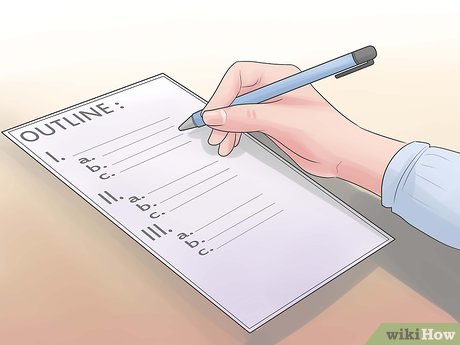
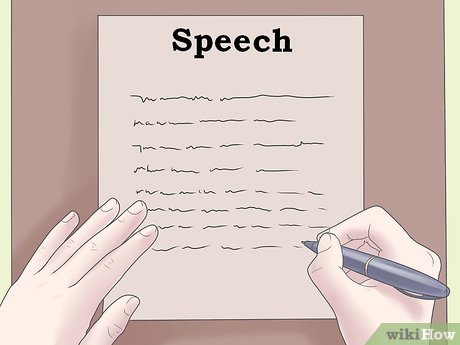

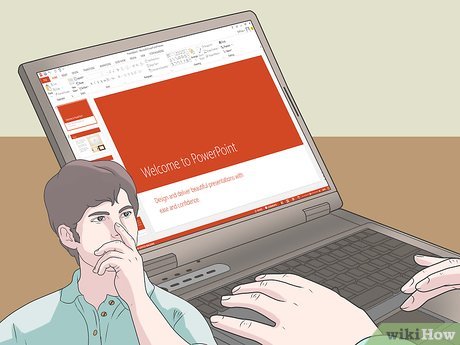






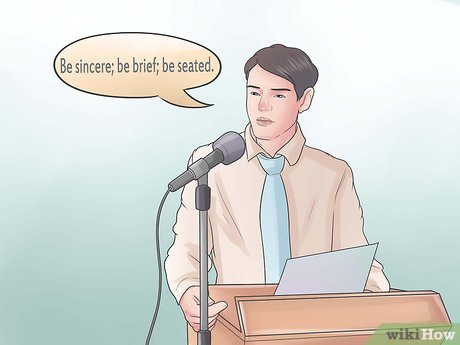




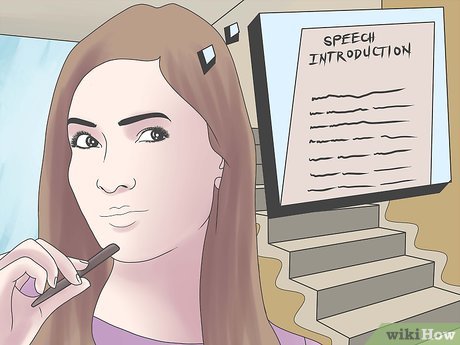
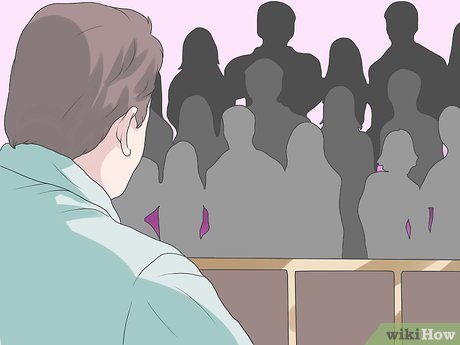








 How to Prepare a Professional Presentation
How to Prepare a Professional Presentation How To Prepare And Deliver A Great Professional-Looking Presentation
How To Prepare And Deliver A Great Professional-Looking Presentation 7 things to know about dental care
7 things to know about dental care Braces & Mistakes in oral hygiene when braces
Braces & Mistakes in oral hygiene when braces Brushing your teeth at any time of the day is the best
Brushing your teeth at any time of the day is the best Dental care can protect your child from obesity
Dental care can protect your child from obesity